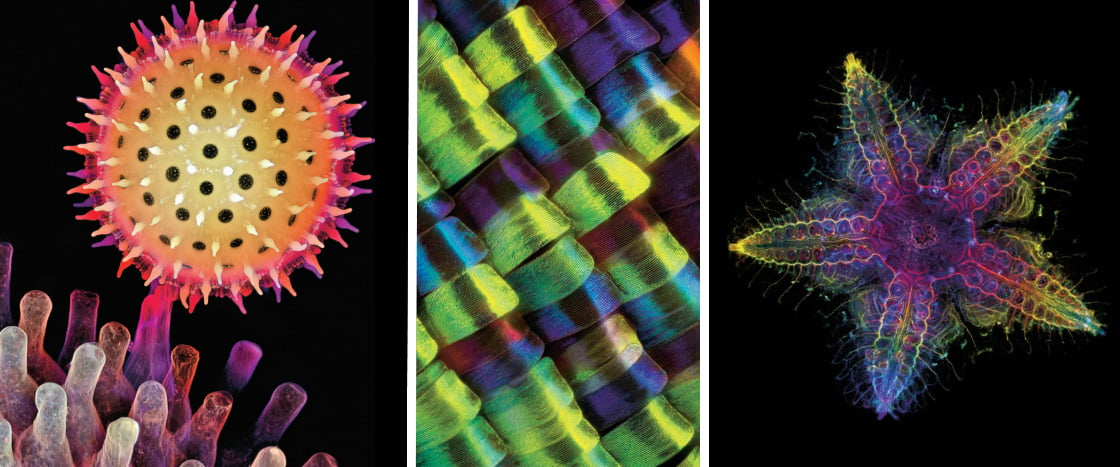How do scientists study things that are really tiny? They look at them under a microscope! Microscopes use lenses and reflected light to create magnified images, or ones that make objects look much larger than they are in real life. The images are useful for scientists. And they can also be beautiful! Each year, the company Olympus gives awards for the most stunning pictures taken with microscopes.
In 2023, the competition received 640 images from scientists and photographers all over the world. The winning photo showed a young sea star’s nerves. These bundles of fibers carry messages through the sea star’s body. The tiny sea creature measured less than 0.5 inches (1.3 centimeters) across!
Laurent Formery, a scientist at Stanford University in California, took the photo. Formery combined several microscope images to get the picture’s multicolored effect. “It’s so beautiful what you can do with the microscope,” he says.

